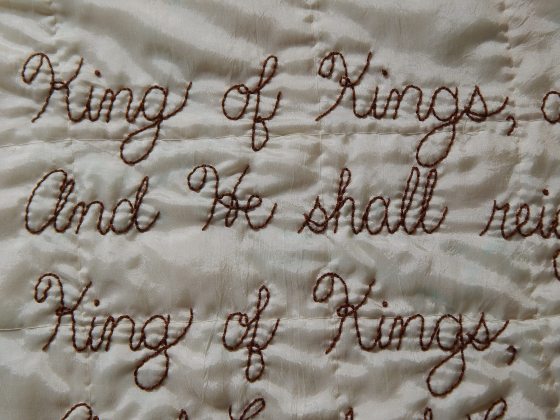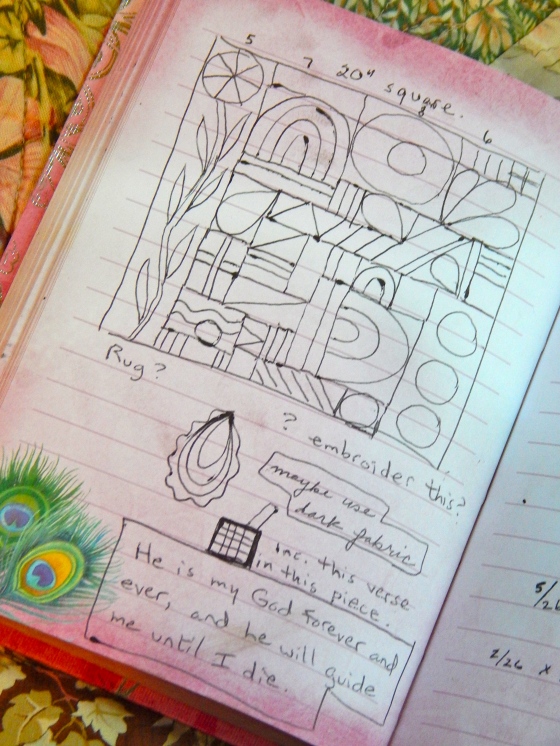A few weeks ago, I made a little “in the meantime” piece because I had “nothing” to work on in the evenings–no handwork.

Since then I have embraced the kantha blanket, and have begun the long journey of repetitive stitching that I had planned for it.

And then, I finally bit the bullet and started a new project that I had been mulling over since last December.


Can you guess what it is? I am doing a quilt of “The Hallelujah Chorus.” It has long been one of my favorite pieces of music. When I lived in Texas, our church choir sang it, and we were required to memorize it. The words are magnificent, and have so much meaning to me. I had the idea when I went last December to a beautiful cathedral in downtown Sacramento for a performance of The Messiah. My little idea was that the quilt had to be extremely beautiful, mostly white, with perfect extensive quilting, and of course, the words would be preeminent, and of course beautiful calligraphy. Hmmm. See why I was afraid to start it?
A little thought came along–why don’t you do what you know you can do well? So I decided to use my own handwriting, and to make my circles with embroidery. I bought some silk-type fabric at Joann’s to practice on, and it turned out that I really liked this fabric, so I stuck with it.
I wanted the piece to be a bit larger than most of my embroidered works, so I came up with the idea of doing the circles and the words in separate panels, and then after all of them are embroidered, I will join them into one quilt top and add more quilting.
All I can say is, you just have to try. It very well could have been that these things would not have worked. Heck, they still might not work. But by trying, even if I fail, I have learned something new.
And now, I must leave you. I have a bit of stitching to do 🙂















